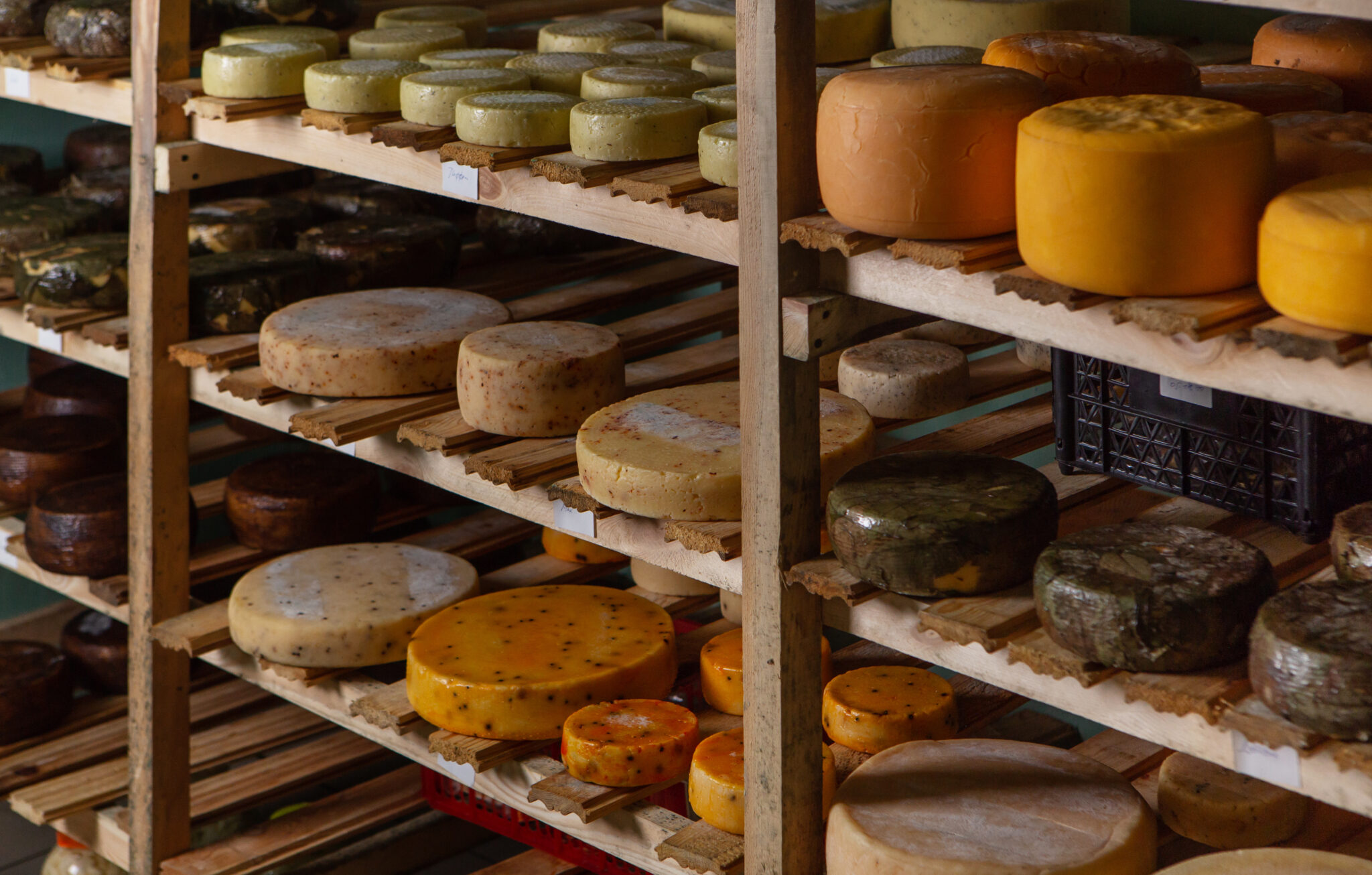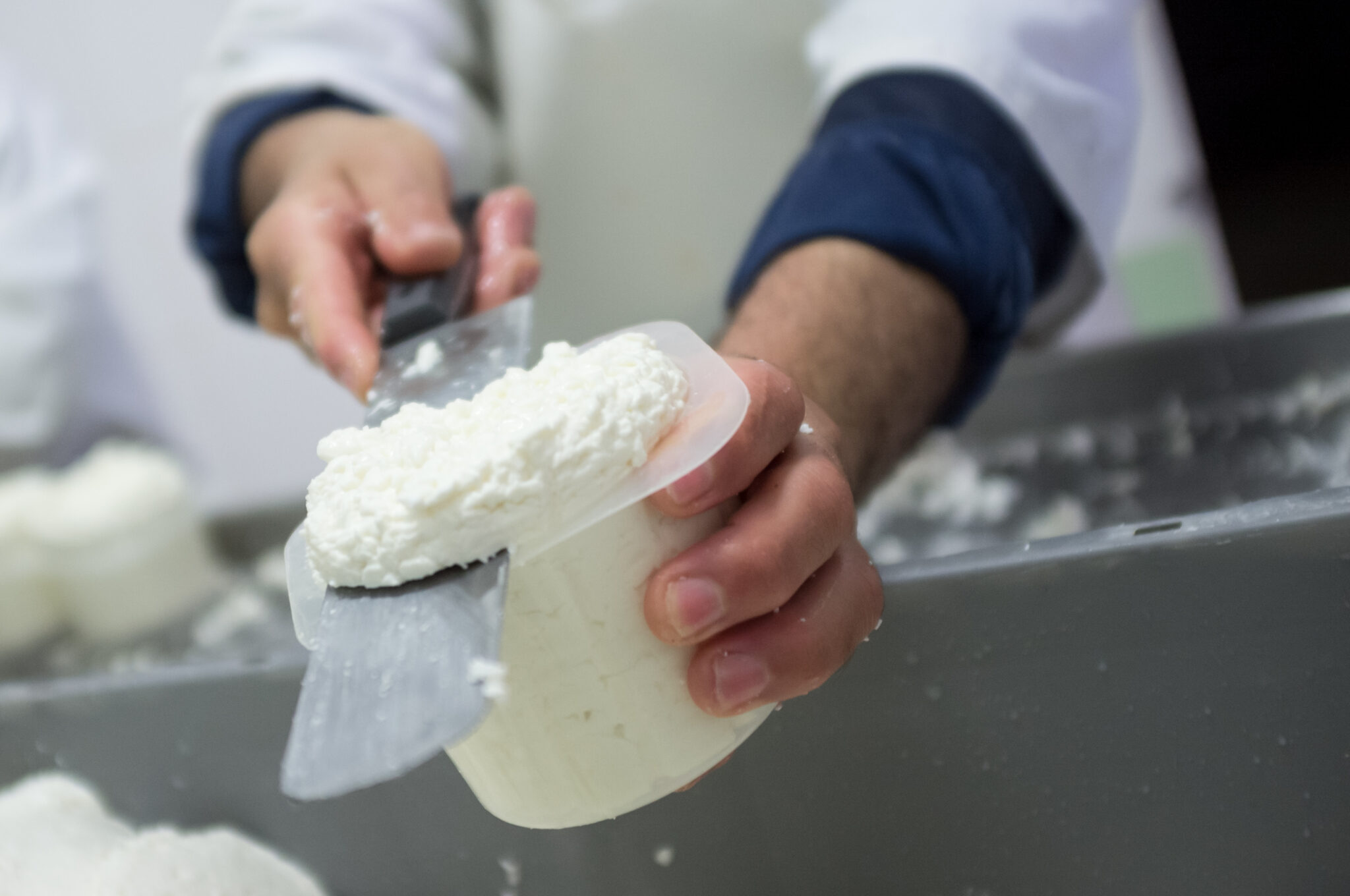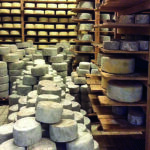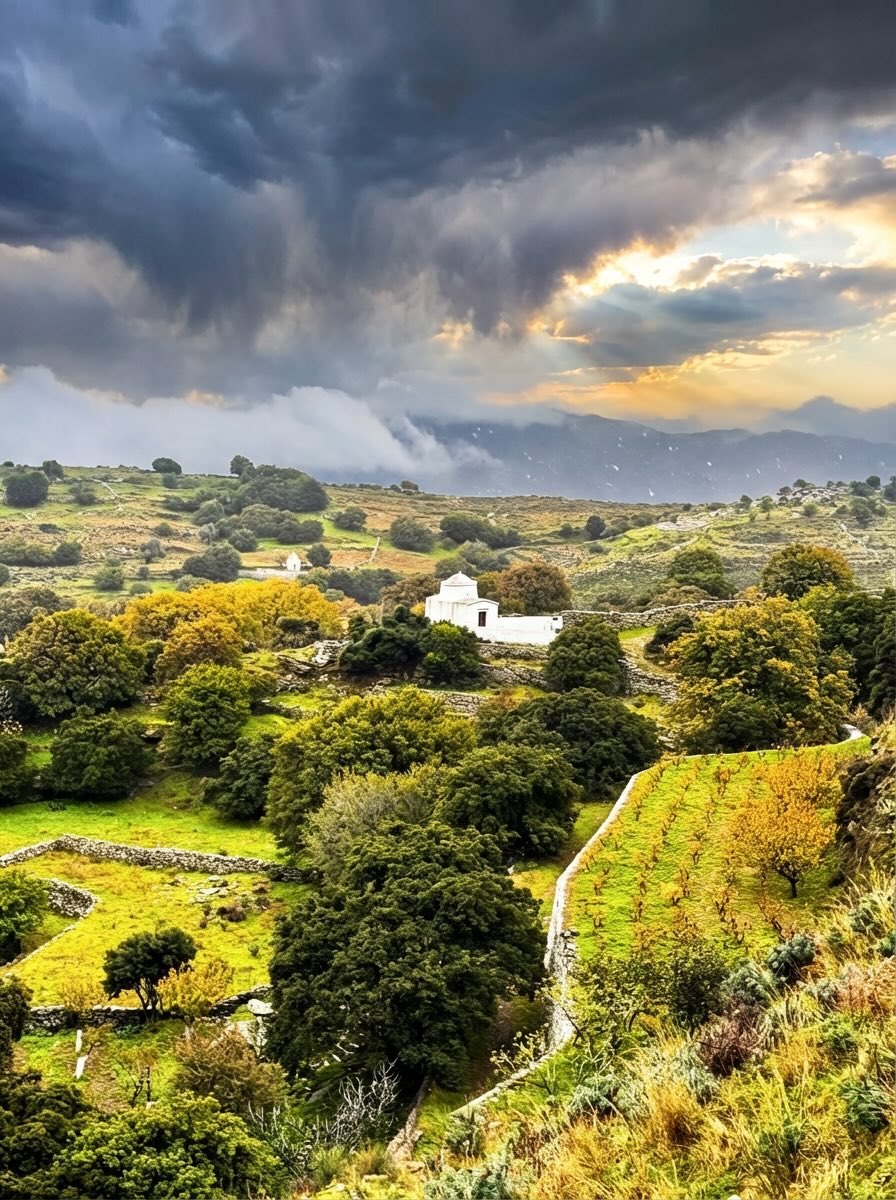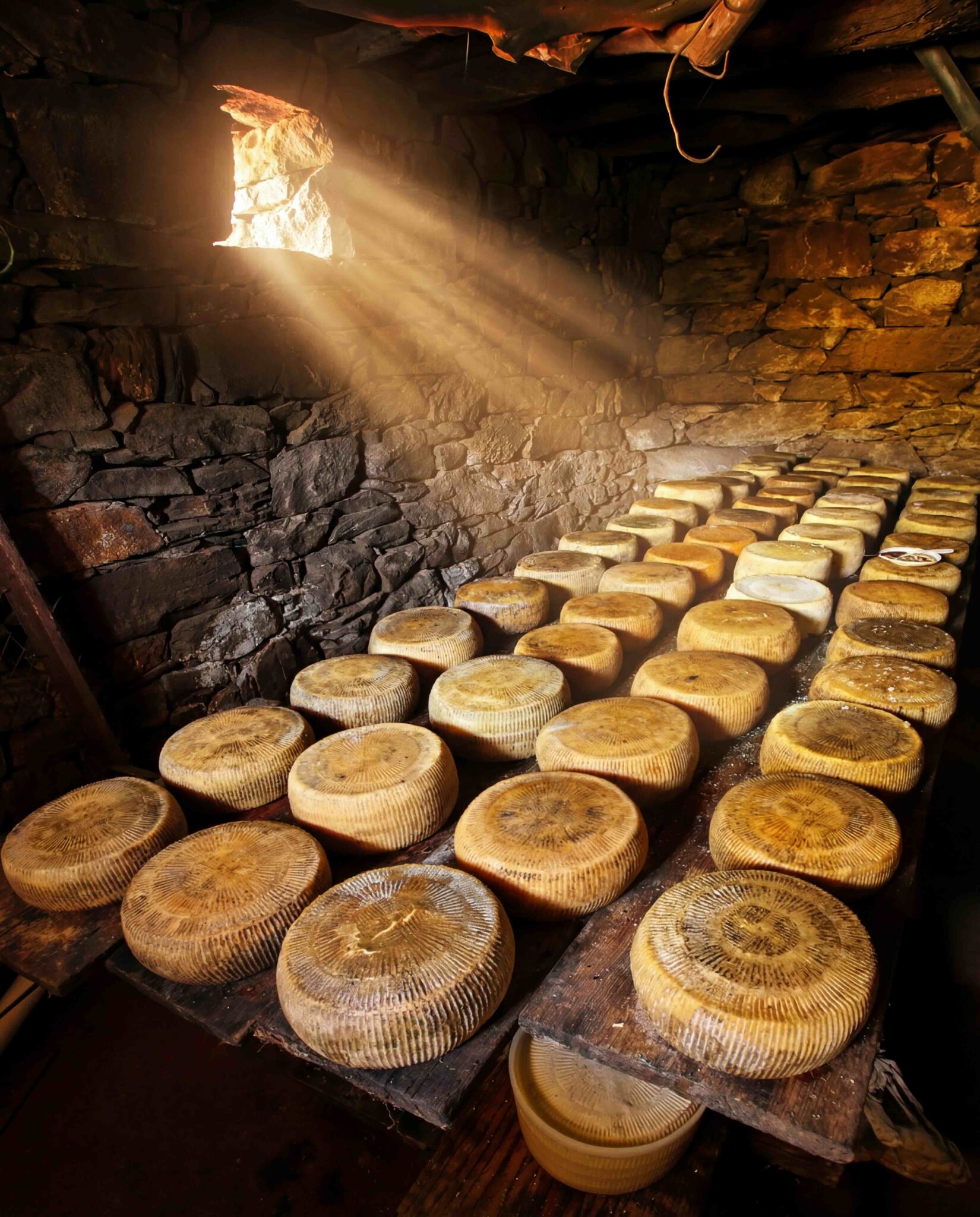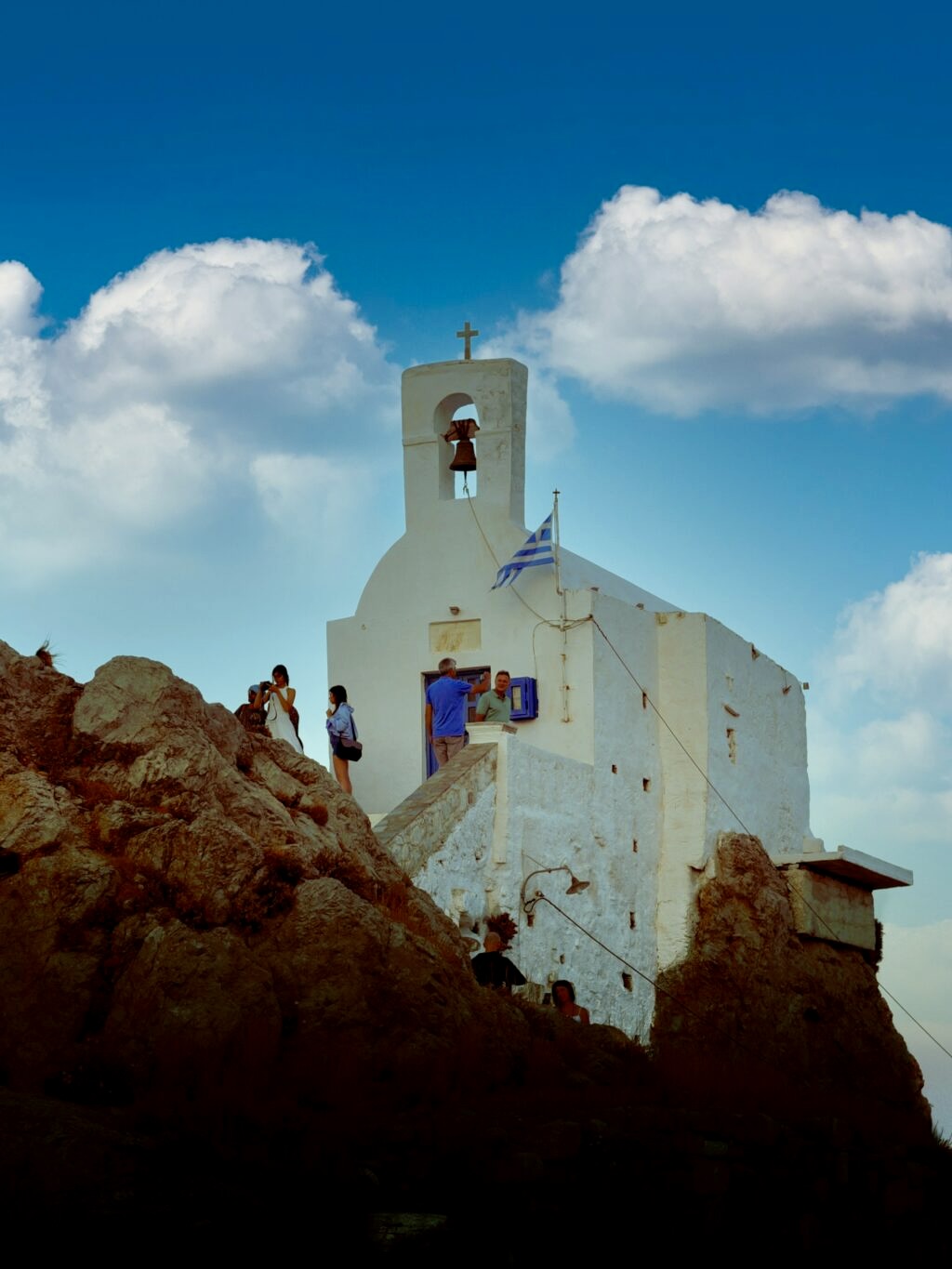The rich tradition in cheese making together with the products of Naxos offer, to this day, unique gastronomic experiences. The island has the largest population of sheep, goats and cattle in the Cyclades, with around 100.000 sheep and goats living on the eastern, mountainous, part of the island, and over 4.000 cows raised on the western side, on the lowlands around Hora.
Over 12.000 tonnes of cow’s milk and 1.500 of sheep and goat milk are produced on the island and in their majority are turned into cheese. The most popular cheese of Naxos is its graviera, which is described as Protected Designation of Origin since 1994.
The special character of Naxos graviera
Naxos graviera is the newest member of a large family of cheese and the only PDO one with cow’s milk as the main ingredient. We say it’s the newest member, because milk producing cows have been introduced to the island regularly since 1950, while in 1961 the first organized dairy was established by the Union of Agricultural Cooperatives of Naxos.
The special character of Naxos graviera and its relative rarity have made it very popular among cheese lovers. It is produced in cylindrical heads, of various sizes, starting at 1 kilo and reaching 9 kilos. It’s characterised by its dense, rubbery mass, the scattered holes, and the yellowish colour. Its skin is thin and dry, while it’s usually covered in a microbiota that helps its maturation. Its fragrances are fine and milky, while its taste is mild, relatively sweet, and grows in intensity as it ages. Its produced from cow’s milk, to which up to 20% of sheep and goat’s milk can be added, that comes from animals raised on the island.
According to the legislation, the milk is pasteurised and frozen, it then thickens with the help of rennet or other enzymes that act similarly, in 30-40 minutes. Then, the curd is divided in pieces the size of a grain of rice and they are reheated at 50οC for about 30 minutes. The cheese is then “baked” for 60 minutes at a stable temperature of 50οC while it is constantly stirred. The curd is then placed in moulds with cheesecloths and is taken to the press where it remains for 3-4 hours and the cloth is changed 3-4 times. After being pressed, the heads of cheese are placed in brine at 20 °Bé and 14οC-15οC for 2-5 days depending on the size of the cheese. They are removed from the brine, are dried, and are taken to the ripening centres where they will remain at a temperature of around 15οC, for 70-80 days.
Of course, all of the above is true for the packaged products, that are produced at the certified dairies. In peasant cheesemaking the techniques and characteristics may differ. So, this rule applies: I try before I buy!
When the locals say cheese, they mean arseniko
Arseniko is a hard, yellow cheese with intense, relatively salty flavour, whose history is lost in time and, of course, precedes graviera. After all, even today, most Naxiots, when they say cheese, mean arseniko. Its name (it means male in Greek) may either be due to its sharp ‘aggressive’ character, or due to the fact that the ‘strongest’ part of the curd is used to make it, in contrast with thiliko cheese (which means female). It comes in cylindrical heads and its production process doesn’t differ much from the well-known kefalotyri, but, since it’s not a PDO product, there may be important variations in various dairies, both concerning the type of milk used and concerning the levels of salt or the production technique.
Traditionally it was made in the mountainous mitata (small stone-built arched dairies) from unpasteurised sheep and goats’ milk and it had great maturing potential. Salting, regularly coating it with olive oil or with the oil’s ‘sediment’, gave its skin an almost black colour, and the dark spaces it was kept in also helped. On its exterior a rich microbiota grew giving the impression of mould but contributing to the cheese’s unique character. In its modern version, less salt is added and often it is sold ‘washed’ for aesthetic reasons, while there are also heads on the market covered in a black ‘film’. It is indeed one of the most interesting Greek cheeses.
Naxos Ladotyri
In the areas that in addition to livestock they also had olive groves, olive oil was a common way of preserving cheese, and, occasionally, improving its flavour and texture. Naxos ladotyri is basically arseniko cheese that after its initial air maturation is put in olive oil, either whole or in large pieces for at least 3 months. It maintains the texture and main characteristics of the original cheese but is enriched by the aromas of the oil.
Krasotyri matures in a container with wine or wine dregs
Krasotyri (literally wine cheese in Greek) or melanotyrti is one more transformation of arseniko, that matures in wine or wine dregs getting a completely different flavour. Similar cheeses can be found in many islands of the Aegean.
Kommos represents the mentality of the cheesemakers of the past
Kommos is in essence a by-product of the making of arseniko, and it represents the mentality of the cheesemakers of the past, who used everything. The curd that remained in the pot were processed again by being boiled, turning them into a low-fat, white, semi-hard cheese with a mild taste and consistent texture that can be eaten raw or saganaki (fried). Its usual form was a ball, but nowadays it mostly comes in cylinders and it also comes scented with herbs and spices. Also spelled komos.
Sweet myzithra or afromyzithra
The well-known mizithra that is made all over Greece. It’s made from the whey that remains after the making of arseniko or graviera, to which a small percentage of full fat milk is added. It’s not salted, and it is to be consumed fresh while it maintains it’s ‘foamy’ texture.
Thilikotyri
What is called anthotyro in the rest of the country, in Naxos is called thiliko (female) maybe because it has a milder taste. It a product of whey to which cream and/or fresh milk is added. As we said for arseniko above, the type of milk may differ according to the dairy. What’s certain is that it is a white, semi-hard to hard cheese, with light salty, spicy and buttery flavour, especially in its more aged versions.
Xinomyzithra is usually produced during the summer months
Contrary to what its name might imply, the traditional way of making this cheese is different from that of myzithra. It is a white, fresh, spreadable cheese with grains, that is made from full fat milk and not from whey. It’s nothing like the Crete xinomyzithra, that is PDO. It is usually produced during the summer months, and it contains mostly goat’s milk and less so sheep’s milk, that is mildly acidified and thickens with the help of rennet without being heated. It is drained with the use of cheese cloths. Its texture is creamy and its flavour appetizingly sour, making it ideal for pies, dakos (a traditional salad with tomato, rusk and cheese) and salads. When xinomyzithra dries for a few weeks in moulds it produces xinotyro.
Naxos touloumotyri, an amazing mezze to go with tsipouro
The aging of cheese in bags made of goat’s skin (touloumia) is a cheese making technique lost in time. Of course, the hygiene regulations and also the difficulty of making real touloumia has limited its use significantly. In the modern-day practice, the touloumia have been replaced by wooden barrels or similar containers. Naxos touloumotyri consists of small pieces of fresh arsenic placed in alternate layers with mizithra and then left to mature, while occasionally the barrel is turned upside down to remove the liquids. It’s a very interesting cheese combining the saltiness of arsenic with the freshness and sharpness of mizithra. It makes an amazing mezze for tsipouro (traditional pomace raki).
They don’t have feta in Naxos, they have tsimiskaki
Since Naxos is not allowed to use the name feta another name was invented to describe the same cheese. Tsimiskaki is made from goats’ or sheep and goats’ milk and is distinguished by its salty and spice flavour. In the Cyclades ‘tsimiskia’ are the knitted baskets used to shape and dry cheese.
N. Darioti, Th. Tsihlaki, A, Androulidakis, “Of the wind and salt”, Cyclades Chamber publishers, 2015. © Cyclades Chamber



